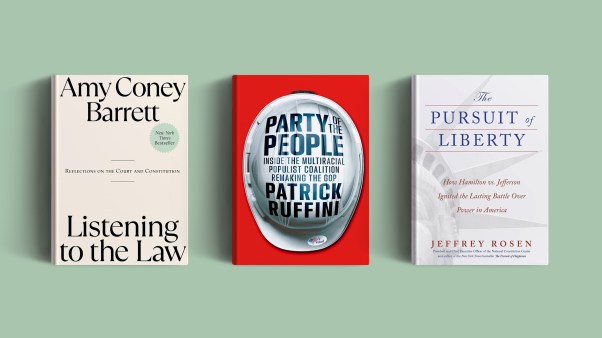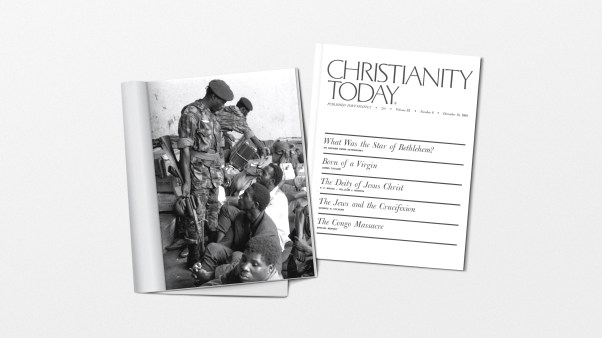When my family moved to Michigan over a decade ago, we were looking for something more than a three-bedroom house in our price range. We wanted a place of beauty, refreshment, and welcome for our children and guests. As newcomers to the state, we took the location seriously. Our previous house lost value due to its small-town setting, so we worried about future property values. As an urban geographer, I mapped changes in demographics and housing prices and created bike and bus travel-time maps from work and schools.
During a frenzied two-day house-hunting trip, we toured 11 houses in city and suburban neighborhoods. We were zeroing in on a 1920s Tudor Revival when our real estate agent caught us off guard: He warned us that our favorite house was right on “the line.” I suspected he was referring to a racial divide.
Zoning maps that divide cities into districts and ordinances that specify the rules for each district were developed in the early 20th century. At the time, the concern was to give homebuyers and lenders confidence that nuisance industries or towering skyscrapers would not be built next door. But in 1926, after the Supreme Court ruled in The Village of Euclid (Ohio) v. Ambler Realty in favor of restricting apartment buildings and industries to permissible areas, zoning spread widely.
In the first half of the 20th century, housing developers also often attached racial covenants to properties, ensuring segregation, and the Federal Housing Administration encouraged racially homogenous communities. The Fair Housing Act of 1968 banned racial discrimination in housing, but that only led to a greater emphasis on zoning regulations to control neighborhood character and keep out undesirable land uses.
We ended up buying that house. According to New Deal loan-security maps from the 1930s, our current neighborhood sat between the city’s highest-rated and lowest-rated—or redlined—neighborhoods. Families here still feel the effects of those boundaries. Our home sits just inside the Grand Rapids city limits, but only three blocks away is the suburb of East Grand Rapids, where three times as many public high school graduates attend a four-year university than in Grand Rapids. Living here has forced me to pay attention to the visible and invisible dividing lines that shape our places and our Christian calling to be hospitable neighbors.
Today, communities across North America are embroiled in debates over zoning reform. When the Supreme Court upheld Euclid’s zoning laws a century ago, it did so to protect the community’s health, safety, and welfare. But in zoning so much of our urban land for detached, single-family houses, we have forgotten to consider the public welfare.
Christians value all three of these things and excel in showing hospitality in churches and in private homes. But we can also lead the way in influencing city zoning codes and the housing within them to love our current and future neighbors.
Places form people—both as individuals and as communities. In contrast to the domination of statistics and computerized mapping in his field in the late 20th century, University of Minnesota geography professor Yi-Fu Tuan advocated for attention to the human experience of place. Tuan showed that places are holistic assemblages of material environments, social relations, memories, emotions, and stories. Places powerfully influence our health, our outlooks, our politics, our friend groups, and our well-being.
For example, while all poor children face many material disadvantages, where children grow up poor also makes a difference. Where we live, especially during childhood, determines our choice of friends, classmates, and role models. Our neighborhood determines whether we have access to good schools, parks, and after-school programs.
Research shows that growing up in low-income, segregated neighborhoods lacking good schools and two-parent families has a profoundly negative effect later in life, independent of family income or race. According to the Harvard University Opportunity Atlas, 6 percent of white boys who grew up in poor households in my neighborhood were incarcerated as adults, but that rises to 19 percent just a few blocks northwest and drops below 1 percent in the suburbs a few blocks to the east.
Young adults who grew up poor in East Grand Rapids or Cascade Township earn twice as much money on average compared to those who grew up in the same economic circumstances but a few blocks away in my Grand Rapids neighborhood. In the US, life expectancies vary between racial groups by as much as 13 years, but by contrast, the life expectancy gap between the least and most healthy American counties is a whopping 27 years.
So why doesn’t everyone take advantage of the opportunities found in East Grand Rapids or Cascade? Almost all of the residential areas in these communities are zoned for detached, single-family houses, and prices and property taxes are high. And in contrast with the city of Grand Rapids, with its public housing units as well as houses and apartments built by faith-based nonprofits, East Grand Rapids does not have a single unit of subsidized low-income housing. Cascade has just one building for low-income elderly residents.
Our homes give us a neighborhood to belong to and neighbors to love. But neighborhoods also give us the challenge of living near others, where spillover effects from our neighbor’s property play a large role in our enjoyment of our house and its market value. For most families, their house is their largest asset. Thus, homeowners have long struggled with how to exert some control over their surroundings to keep their housing investment secure and also ensure good neighbors.
The zoning ordinances that govern neighborhoods act like DNA, dictating what type of buildings, uses, and animals are allowed, along with building height, parking requirements, setbacks from property lines, and more. If you walk around North American cities with a zoning map in hand, you would be amazed at how effectively zoning rules influence the character of neighborhoods. The reason that some streets have tall apartments and others have nothing but single-family houses is all laid out in the zoning code.
Just a few miles east of my house, in Cascade Township, is the highly sought-after Forest Hills School District. The R-1 zoning rules there specify that lots must be at least 80,000 square feet (1.8 acres), and single-story houses must have a minimum floor area of 1,300 square feet.
In East Grand Rapids and Cascade—as with most US cities and suburbs—detached single-family zoning districts dominate the map. For example, despite suffering a housing crunch, Seattle has zoned more than 70 percent of its residential land for detached, single-family houses. Typically, the most desirable areas of communities, like those near natural amenities like parks, are designated single-family zones, while areas near noisy highways or commercial areas are zoned for apartments.
City planners and council members in Minneapolis, for example, now see single-family zoning as a continuation of racially exclusive housing practices and a means for the middle and upper classes to hoard their privileges. Detached single-family houses can be a great place to raise children and show hospitality, but they are not well suited to all households—some don’t need or want the extra space and constant maintenance.
In 2019, my hometown of Minneapolis was celebrated nationwide for its 2040 Plan, which made it the first major US city to eliminate single-family zoning in order to open the most desirable residential areas to everyone, regardless of financial means. The 2040 Plan allows different housing types such as duplexes, small apartments, and small backyard cottages to be built in single-family zones.
Other cities have followed Minneapolis, but eliminating single-family zoning has hit major roadblocks. Implementation of the Minneapolis 2040 Plan was held up for years by a lawsuit filed by a coalition of environmentalists who demanded greater environmental review and civil rights activists who feared it would trigger a wave of development that would displace low-income communities.
Our cities and suburbs face similar impasses over attempts to reform zoning. Even if city planners succeed in building low-income housing in affluent areas, allowing broader opportunities for education and accessibility, they are unable to change human hearts. They cannot force well-to-do homeowners to become friends with residents of a nearby affordable housing complex. They cannot make different groups of people live together in harmony.
Christian love and hospitality are responses to God’s generosity. We are often exceptionally good at showing hospitality in our private homes, but we may not have considered how we and our spaces might be unhospitable on a greater, bureaucratic level.
The evangelical Christian church has largely flourished in the post-WWII neighborhoods and suburban spaces that are dominated by single-family zoning. The Greek word for hospitality literally means “love of strangers,” yet ironically, hospitality is often only displayed inside residential zones that are inhospitable to families with different needs or fewer resources. Might hospitality also involve reforming zoning codes or constructing places for those with different housing needs or fewer financial resources?
Believers are called to more than comfort. Loving our neighbors means ensuring they too live in good places. In the Old Testament, land represented economic opportunity and was central to the Jewish ethical system. The distribution of land among the clans, gleaning laws, the Sabbath Year, and Year of Jubilee were all designed to provide relative equality of access to economic opportunity (Lev. 25:8–38). Our Western culture today is not an agrarian society, but land regulations such as zoning laws exert great influence over access to educational and job opportunities.
The church is one of the last places that brings together people who differ in age, income, social status, and family status. One way to break a “not in my backyard” impasse is to consider the people in your congregation and their housing needs. Is there local housing suited for a newly married couple with student loans, an elderly widow who uses a walker, or a two-parent household with young children? If not, what needs to change?
Finally, would your local zoning codes allow a Habitat for Humanity house or apartment to be built by your church? In my area, the South Hill campus of Madison Church has taken concrete steps to demonstrate hospitality to new neighbors in this way. The congregation partnered with a faith-based affordable housing provider to build 41 units of affordable housing within their church building, which sits astride another of Grand Rapids’ dividing lines.
Madison Church South Hill now shares a roof and common spaces with its neighbors as well as a weekly community Bible study and monthly community brunch. The first person to be baptized in the new sanctuary was a building resident, a symbol of the bridges that have been built. Building affordable housing in desirable communities has always been an uphill battle, but churches can lead the way in showing hospitality, whether in our houses, churches, neighborhoods, or zoning codes.
Mark D. Bjelland is professor and chairman of the department of geology, geography, and environment at Calvin University and author of several books, including a forthcoming book on Christian place-making.















